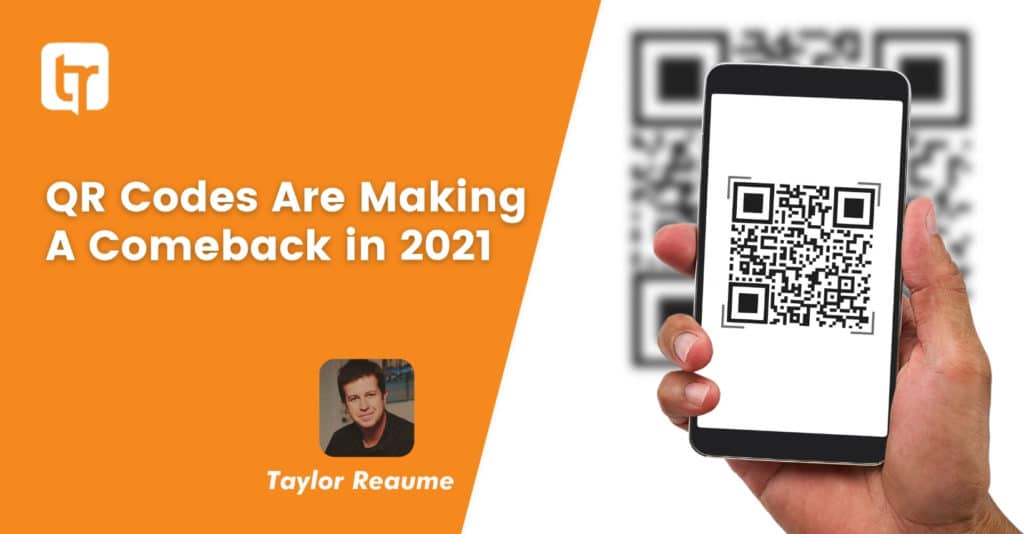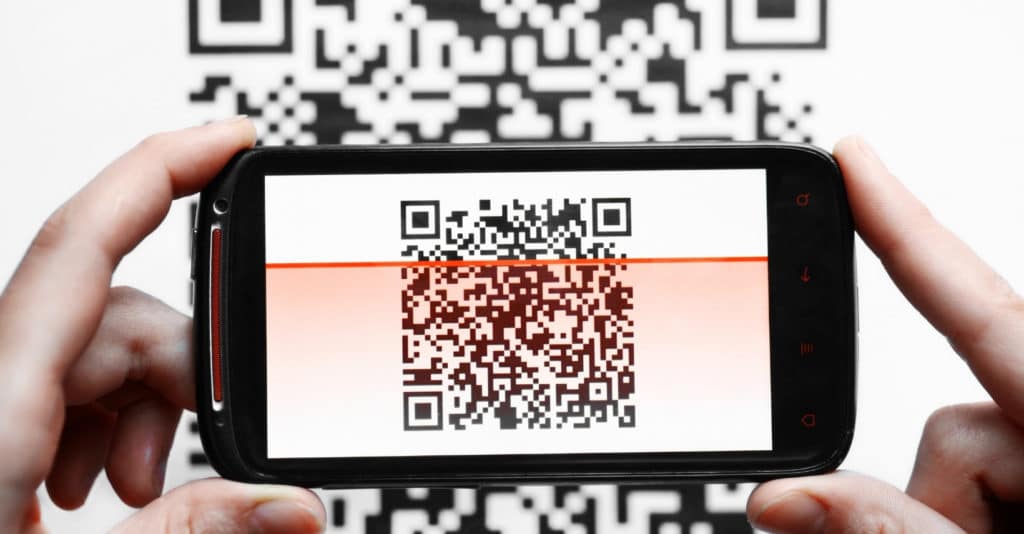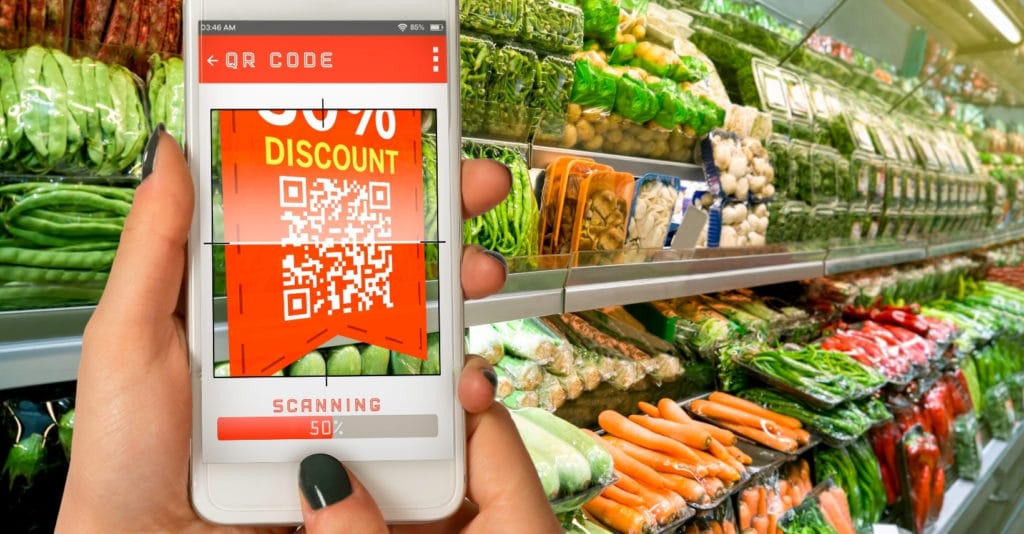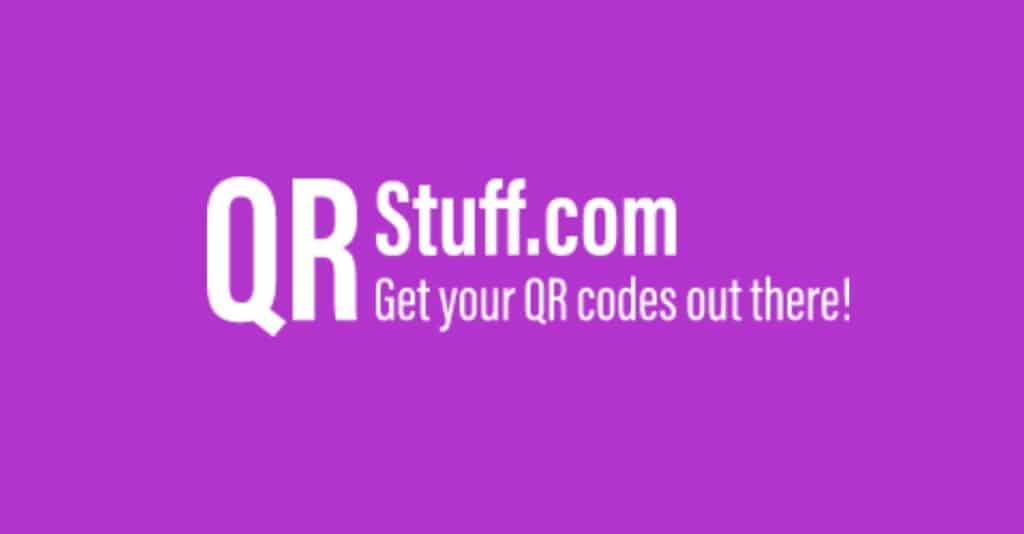QR Codes Are Making A Comeback in 2021

Ever heard of QR codes?
Unless you work in the marketing industry, chances are you’ve probably only heard of them occasionally.
A QR code is essentially an enhanced version of the average barcode. However, they can hold roughly 350 times the amount of information that could be stored on a typical one dimensional barcode.
QR codes saw a sharp increase in popularity when they were first introduced, but then started steadily declining in popularity when they were not widely adopted by Apple and Samsung smart phone manufacturers.
In addition, WiFi technology had made serving in-store advertising easier, which pushed QR codes further down the “must have” list.
During the month of June 2011, 14 million American mobile users scanned a QR code or a barcode. Some 58% of those users scanned a QR or barcode from their homes, while 39% scanned from retail stores; 53% of the 14 million users were men between the ages of 18 and 34.
QR code usage decreased to 9.76 million in 2018 but is expected to grow to a total of 15 million households by the end of 2021. This is largely due to the newer smart phones adopting the technology “natively”, meaning, you don’t need to download a third party app, it’s built right into the phone camera.
The pandemic also created a huge need for QR codes with contactless shopping and delivery. I t also created a need for communicating information without touching an item others had touched, too. This meant developing a way to communicate lots of information quickly without touch. Rather than reinvent the wheel, marketers and computer techs realized the power of QR codes to do exactly what is needed.
The humble QR code stepped in to provide a succinct way to communicate information and complete transactions. A business can provide a QR code for customers to scan that lets them instantly register for delivery programs, loyalty programs, etc. It provides a method of completing contact-free retail purchases via mobile wallet. According to Juniper Research, by 2025 about 2.2 billion people will use QR codes for payments. That’s nearly one-third of smartphone users – 29 percent.

What is a QR code?
The term QR code refers to a Quick Response (QR) code. A smartphone can read this two-dimensional code using its camera. This lets retailers place these codes in store windows or at checkout stands or on the aisles of a store to provide consumers with a way of quickly scanning to obtain more information.
Consumers can also create QR codes using the retailer’s website or an app. These codes can contain the information from a coupon, gift certificate, or online order number. By displaying their cell phone at the register, the sales representative can scan the item using the register wand. Neither party needs to touch, and the entire transaction can occur through a clear plexiglass sneeze guard.

Which country has the largest QR code adoption?
Asia, specifically China, uses QR codes most frequently. It has also seen the greatest adoption of e-wallets such as WeChat and AlliPay. In 2019, almost half of the point-of-sale payments in that country used QR codes, a total of 48 percent.
Plaid and PayPal have introduced a QR code option. This lets users of those two worldwide payment services use the technology to accept or make payments.
According to a 2019 Deloitte Mobile Consumer Survey, 91 percent of Australians own a smartphone. Only ten percent of those use QR payments though, says a Roy Morgan report from the same year. Australia’s mature market with widespread NFC and a massive 900,000 point of sale (POS) devices make it easy for the country’s residents to make contactless payments. In 2019, most of the country’s purchases were contactless – 83 percent. Since its populace would likely immediately adopt a QR code option, its federal government plans a national plan it will implement in 2021.
New Zealand joined the fray in 2020 when the Union Pay International (UPI) system it uses introduced a consumer payments QR code program. Australian retailers can also use the UPI system. Its competitor, Azupay, and the regional NSW government partnered to offer QR code payments.

QR Codes = Simplicity and Usefulness
As part of a payments system, the simple technology has grown quickly due to its easy adoptability and adaptability. It requires no extra hardware since the user’s smartphone can scan the code to complete the transaction. This use of existing hardware also makes the QR code more convenient. Although a tiny two-dimensional picture, a single code holds lots of information. Its data capacity is such that it communicate payment, identity, and loyalty.
Some older phones require a separate app. Newer smartphones come ready to scan though. They use built-in software. This means any customer with a smartphone can install the app needed to read the codes which are also free.
Its only two drawbacks include risk of fraud since a customer could scan a fake code which results in them completing a phone call they’re charged for or otherwise losing money and privacy issues. The customer may not immediately understand what information the QR code accesses or uses.

QR as a Marketing Tool
The QR code offers an opportunity for retailers to market their products or business more effectively. Because it can quickly communicate information, the codes provide a useful mechanism with many uses including:
- Restaurants: communicating the entire menu through a code to eliminate hands-on menus. The restaurants’ website or app also enables touchless, contactless ordering.
- Hotels: provide contactless check-ins, room service menus and ordering mechanisms, lighting and air conditioning controls.
- Museums and art galleries: provide visitor maps and guides.
- Medical facilities: communicate health education materials.
Other ways to use the QR code include as an advertising tool. Facebook, Pinterest, and Instagram require a square photo or graphic.
When you create an ad on Facebook, it warns you not to use text. The reason for this is because ads with lots of text simply don’t perform that well. Using a QR code lets you embed the code in the center of the graphic, and this enables you to put all a large amount of text in the page which the QR code sends the visitor to.
You can communicate all the information you need in that one QR code.
Your one sentence headline can be concise and direct, while the QR code carries all of the extra information. Users can like your post and scan the QR code to gain access to more information. This lets you embed a paragraph on a code so you can provide users with details instead of the bare minimum.
Similarly, you use QR codes to sell products. A customer only needs to scan the code to order the product. You can set up an entire store on any platform even if it does not offer an e-commerce option or interface with a store environment like Etsy.
In Conclusion
QR codes can help you accept orders, take payments, advertise products, offer coupons, communicate information. You can create a QR code that houses your entire menu or sells a t-shirt.
Provide a QR code on a poster to link to a website with further information. Gyms can use them to educate consumers on how to use each piece of equipment or use them so patrons can check in on each apparatus.
Any time you need to graphically communicate lots of info at once, leverage a QR code. They’re not just for e-books anymore.
While they did wane in use for a little while, once people could not enter stores, they made a comeback.
Whether you use a tablet, smartphone, or a computer, you can create, obtain, or access a QR code. This makes it simpler for all sizes of businesses to utilize this technology and improve their sales, tracking, and customer service.

If you’re searching for a free QR code generator, I evaluated and compared several tonight, and found this one to be best for my needs: https://www.qrstuff.com
100% Ad Free QR Codes
QR Stuff has QR codes that are guaranteed 100% ad-free, even for free users, so you can get on with promoting your product without someone else’s brand getting in the way.
I used this QR code generator successfully for my pest control Brezden Pest Control. They needed a QR code added on a few of their products so that technicians in the field could quickly pull up ingredient lists and instructions.
Here is QR Stuff FAQ:
Can I use the website as a free user?
Yes. You can create fully functional QR codes anonymously as a free user with no need to sign up or open an account. No sign-up = no email address harvesting = no spam from us 🙂
Also, unlike some others, our free QR codes aren’t crippleware that stop working 14 days later. Our free QR codes aren’t time-limited in any way, don’t expire, and are ad-free.
What’s the subscription fee for?
The subscription fee charged relates to providing time-based subscription access to the extended feature set of the website for the period of the subscription purchased.
Opening an account is required for paid subscribers in order to co-ordinate the functionality of your account and to allocate the QR codes you create to your account history (but still no spam!).
No component of the subscription fee relates to purchasing the QR codes themselves.
Will my QR codes “expire”?
No. The QR codes (and any underlying short URL’s) created by both free users and paid subscribers are permanent and will continue to function indefinitely, however temporary scan limits may apply as outlined below.
Can I use your QR codes commercially?
Yes. There are no restrictions on commercial use however temporary scan limits may apply as outlined below.
Are there any limits on use?
The short answer is Yes, but the reality is that the vast majority of users won’t be affected by them. These limits only apply to dynamic QR codes that use our (optional) URL shortener – QR codes that do not use our URL shortener (static QR codes) have no scan limits.
Free Users: While there are no limits on the number QR codes you can create as either a free or paid user, a limit of 50 scans per month is applied to each QR code created by free users. This monthly scan limit presently affects less than 0.001% of the QR codes in our system so it will not impact the overwhelming majority of users. If you anticipate that your QR code will be scanned more than 50 times per month, you should probably consider a paid subscription.
Current Full Paid Subscribers: There are no pre-set scan limits for QR codes associated with current (paid-up) full subscriber account.
Expired Full Paid Subscribers: A 50 scan/month limit is applied to QR codes associated with expired paid subscriber accounts. This scan limit for expired subscribers is a “per QR code” limit and is only applied to the individual QR codes that exceed the monthly 50 scan limit, and does not affect any other QR codes associated with the expired subscriber account. The scan limit is re-set at the start of each calendar month.
At our discretion a temporary Fair Use monthly scan limit may be applied to unusually high scan-volume QR codes (>30,000 scans/month) belonging to current paid subscribers. This Fair Use Policy limit is intended to ensure that the scan activity of a minority of users doesn’t adversely impact optimal platform performance for all users.
Don’t worry – current subscribers will be contacted well in advance if any of their QR codes are approaching a Fair Use threshhold so that we can work out a solution with them.
Collectively, these measures will only affect about 1 in every 10,000 users – the other 9,999 won’t even know that any limits exist 🙂
And just to reiterate – these limits only apply to dynamic QR codes (the QR codes that use our optional URL shortener). All other QR codes are unlimited.
What do I do if my QR codes are scan-limited?
Expired full subscribers simply need to renew their subscription and the scan limit status of their account will be automatically reset from expired to current.
Free users who upgrade to a full paid account (1 month or longer) can contact us to have the QR codes they created as free user moved to their subscriber account which will remove the 50 scans/month limit from them. This is a complimentary service for up to 10 QR codes.
Are your QR codes ad-free?
Yes. Both our free and paid QR codes are guaranteed 100% ad-free. If you see an ad after scanning one of our QR codes, the QR code scanning app that you’re using put it there.
Is a license required to create QR codes?
No. The QR code is clearly defined and published as an open ISO standard. Denso Wave owns the patent rights on the QR code creation process, and the methods used to encode and create them, but has chosen not to exercise those rights. The term “QR code” itself is a registered trademark of Denso Wave Incorporated.
The answer to the following questions is always “No”
- Can I add a QR code to my account that I created somewhere else?
- Can I get analytics from you for a QR code that I created somewhere else?
- Can I have a free trial subscription?
- I’m making my own QR code website. Can you tell me how you did everything on yours?

